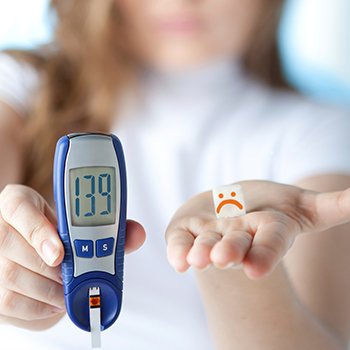แนวทางการพัฒนาผลิตภัณฑ์อาหารที่มีค่าดัชนีน้ำตาลต่ำ Guidelines for Developing Low Glycemic Index Foods
2103 Views |

แนวทางการพัฒนาผลิตภัณฑ์อาหารที่มีค่าดัชนีน้ำตาลต่ำ
Guidelines for Developing Low Glycemic Index Foods
By: วรรณิภา สมผุด
Wunnipa Sompud
Senior Research and Development
Food Innovation and Packaging Center
Chiang Mai University
wunnipa.fin@gmail.com
รศ.ดร. ยุทธนา พิมลศิริผล
Assoc. Prof. Yuthana Phimolsiripol, Ph.D.
Director
Food Innovation and Packaging Center
Chiang Mai University
yuthana.fin@gmail.com
ค่า GI ส่งผลต่อสุขภาพอย่างไร?
การบริโภคอาหารที่มีค่า GI สูง มีผลทำให้ระดับกรดไขมันในเลือดเพิ่มขึ้นมากกว่าการบริโภคอาหารที่มีค่า GI ต่ำ ในทางกลับกันอาหารที่มีค่า GI ต่ำ ก็จะช่วยในเรื่องของการย่อย ทำให้เกิดดูดซึมได้ช้าลง รู้สึกอิ่มง่ายและนานขึ้น จึงสามารถรักษาระดับอินซูลินและไขมันในเลือดที่เหมาะสมไว้ได้ ซึ่งจะส่งผลดีต่อสุขภาพในระยะยาว
แนวทางการลดค่า GI ในผลิตภัณฑ์อาหาร
ปัจจุบัน การลดค่า GI ในผลิตภัณฑ์อาหารมีหลากหลายวิธี อาทิเช่น การทดแทนวัตถุดิบที่ใช้ด้วยการนำวัตถุดิบที่มีค่า GI ต่ำกว่าเข้ามาผสมในผลิตภัณฑ์ เช่น การทดแทนแป้งขัดขาวหรือข้าวที่มีค่า GI สูงด้วยการใช้ธัญพืชไม่ขัดสี แป้งโฮลเกรน (Whole grain) หรือพืชตระกูลถั่ว ซึ่งมีค่า GI ต่ำกว่า เช่น การใช้แป้งถั่ว หรือการดัดแปรทั้งทางธรรมชาติ ทางกายภาพ เคมี และเอนไซม์ เพื่อให้ได้แป้งที่ไม่สามารถถูกย่อยสลายได้ด้วยเอนไซม์ในลำไส้เล็กของมนุษย์ ที่เรียกว่า แป้งต้านทานการย่อย (Resistant Starch; RS) โดยวิธีการดัดแปรดังกล่าว ได้แก่ การใช้ความร้อน การใช้ความดัน การใช้แรงเฉือน การลดขนาด การฉายรังสี การดัดแปรสตาร์ชทางเคมีแบบอีเทอร์ริฟิเคชัน (Etherification) การดัดแปรด้วยวิธีแอซิทิเลชัน (Acetylation) การดัดแปรด้วยวิธีเชื่อมข้าม (Cross-linking) การดัดแปรด้วยวิธีออกซิเดชัน (Oxidation) และการดัดแปรสตาร์ชด้วยเอนไซม์ ซึ่งอาจใช้เพียงปัจจัยเดียวหรือหลายปัจจัยร่วมกันก็ได้ ทั้งนี้ การใช้สารอาหารประเภทโปรตีน ไขมัน ใยอาหาร ตลอดจนสารสกัดจากพืชบางชนิดในส่วนผสมของอาหารก็สามารถลดค่า GI ของผลิตภัณฑ์อาหารได้เช่นกัน
วิธีการวิเคราะห์ค่า GI ทำอย่างไร?
การวิเคราะห์ค่า GI สามารถทำได้ใน 2 วิธีหลัก คือ 1) การวิเคราะห์ด้วยวิธี in vitro เพื่อจำลองสภาวะการย่อยของคาร์โบไฮเดรตในร่างกาย และ 2) การวิเคราะห์ด้วยวิธี in vivo หรือการทดสอบทางคลินิก (Clinical trials) ซึ่งเป็นการวัดอัตราการย่อยในอาสาสมัครที่มีสุขภาพร่างกายแข็งแรง โดยการบริโภคอาหารที่ต้องการทดสอบ และทำการวัดปริมาณน้ำตาลกลูโคสในเลือด ซึ่งปัจจุบัน ได้มีศูนย์ทดสอบดัชนีน้ำตาล (Glycemic Index Center; GIC) จากมหาวิทยาลัยเชียงใหม่a ที่ให้บริการตรวจวิเคราะห์ค่า GI ในผลิตภัณฑ์ด้วย
How does the Glycemic Index (GI) Impact on Health?
Consuming foods with a high GI will most likely cause an increase in fatty acid levels in the blood more than consuming foods with a low GI. On the other hand, foods with a low GI can effectively support the body's digestion and cause a slower absorption rate, leading to a feeling of being full for a more extended period, thereby maintaining proper insulin and lipid levels in the blood, thus contributing towards a positive impact on your health in the long run.
Development Guidelines of Low Glycemic Index Foods
Currently, there are several options to reduce the GI value in food products, such as substituting raw materials by introducing raw materials with a lower GI value, such as substituting raw materials or food ingredients by replacing white flour or rice with a high GI value with unpolished grains, whole grain flour, or legumes, all of which possess a lower GI value, such as using pea starch, or applying natural, physical, chemical and enzymatic modification to obtain starch that cannot be digested by the enzymes in the small intestines, or known as resistant starch (RS). Such modification includes the use of heat, pressure, shear force, particle size reduction, irradiation, starch etherification, acetylation, cross-linking, oxidation, and enzymatic modification. In this regard, one or more methods may be used. However, the use of nutrients such as protein, fat, dietary fiber, and extracts from certain plants in food ingredients can also effectively reduce the GI value of food products.
How to Measure the Glycemic Index (GI)?
The testing of GI can be conducted through two key methods: 1) in vitro tests, to simulate the digestion of carbohydrates in the body and 2) in vivo tests, or clinical trials. This method measures the digestion rates in healthy volunteers by consuming the food to be tested to determine the blood glucose level. Currently, there is a Glycemic Index Center (GIC) at Chiang Mai Universitya for GI testing services.






